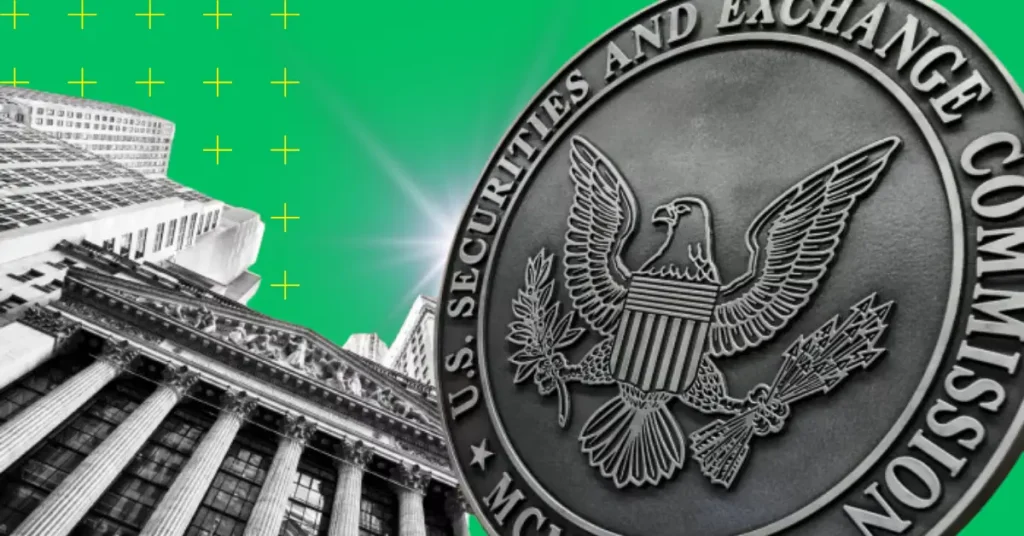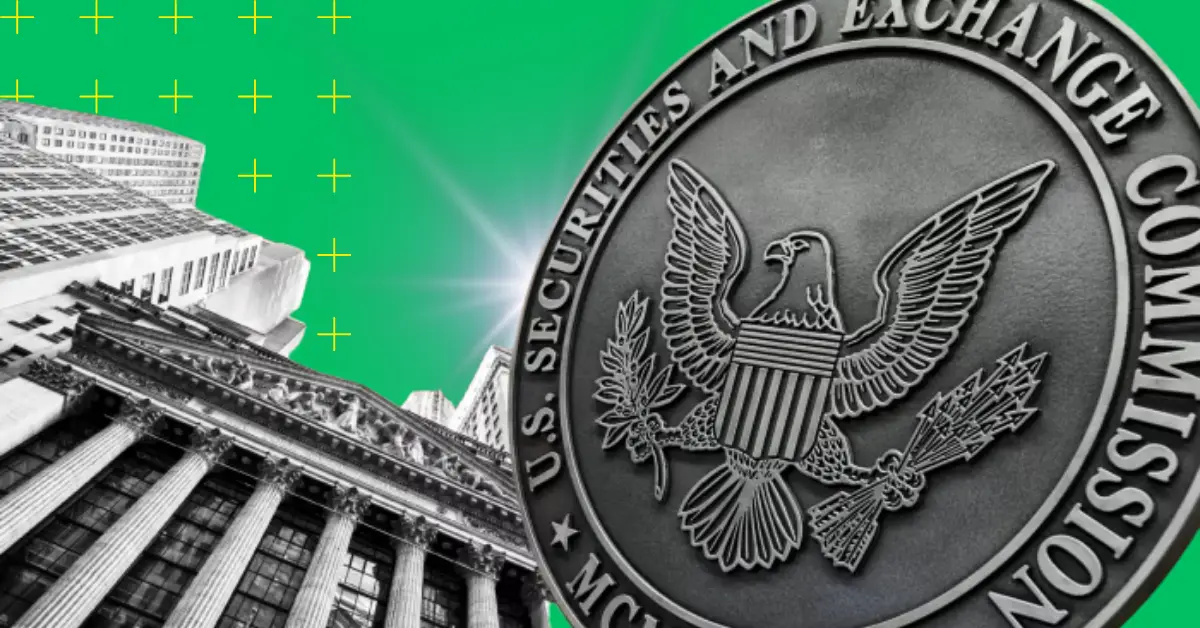
The world of cryptocurrency is a dynamic and often perplexing landscape, filled with innovative technologies and evolving financial instruments. As digital assets gain prominence, regulatory bodies like the U.S. Securities and Exchange Commission (SEC) are stepping up their efforts to provide clarity and structure to this burgeoning market. In April 2025, the SEC’s Division of Corporation Finance issued new guidance aimed at clarifying how federal securities laws apply to crypto asset offerings and disclosures. This move signifies a crucial step towards mainstreaming crypto while protecting investors and ensuring market integrity. Let’s dissect this guidance, explore its implications, and understand how it’s shaping the future of crypto investments.
The SEC’s recent guidance is not a complete overhaul of existing regulations but rather a refinement and clarification of how established securities laws apply to the unique characteristics of digital assets. The core objective is to ensure that investors have access to transparent, accurate, and comprehensive information when considering crypto-related investments. This initiative addresses a critical need in the market, as the complexity and novelty of crypto assets can often leave investors vulnerable to fraud and misinformation.
The guidance emphasizes the importance of tailored disclosures that reflect the specific nature of a crypto business and its offerings. This means that companies operating in the digital asset space, or those offering tokens as part of investment contracts, must provide clear and concise information about their operations, revenue generation, and involvement in cryptocurrency networks.
Enhanced Disclosure Requirements
A central theme of the guidance is the emphasis on enhanced disclosure requirements. The SEC is urging crypto issuers to present clear, concise, and tailored disclosures that accurately reflect their operations. This includes detailed information about the technology underpinning the crypto asset, the risks associated with investing in it, and the company’s financial health and business model.
For instance, the SEC has highlighted the need for issuers to disclose any potential conflicts of interest, such as insider trading or market manipulation risks. This is particularly important given the decentralized nature of many crypto projects, where transparency can be lacking. The guidance also mandates that issuers provide regular updates on their tokenomics, including supply and demand dynamics, to help investors make informed decisions.
Moreover, the SEC has stressed the importance of disclosing the regulatory environment in which a crypto project operates. This includes any ongoing legal challenges, regulatory investigations, or compliance issues that could impact the project’s viability. By providing this information upfront, issuers can help investors assess the risks associated with their investments more accurately.
Navigating Registration and Compliance
The SEC is clarifying the requirements for registering crypto asset offerings under the Securities Act of 1933 and the Securities Exchange Act of 1934. This is crucial because many crypto assets may be considered securities under U.S. law, requiring issuers to register with the SEC and comply with ongoing reporting obligations. The guidance helps companies understand when registration is necessary and how to navigate the process.
The SEC has provided a framework for determining whether a crypto asset is a security, based on the Howey Test. This test evaluates whether an investment contract exists by examining factors such as the expectation of profits, the efforts of others, and the pooling of resources. The guidance clarifies that many crypto assets, particularly those that involve the sale of tokens to fund a project, are likely to be considered securities and thus subject to SEC regulation.
Additionally, the SEC has outlined the steps that issuers must take to comply with registration requirements, including filing Form S-1 for initial public offerings and Form 10-K for annual reports. The guidance also emphasizes the importance of ongoing compliance, such as filing Form 10-Q for quarterly reports and Form 8-K for material events. By providing this clarity, the SEC aims to ensure that issuers are held accountable for their disclosures and that investors have access to up-to-date information.
Crypto ETPs: A New Dawn for Investment
The SEC’s guidance also addresses the growing popularity of crypto ETPs, particularly spot Bitcoin ETFs, which have experienced substantial growth since their approval in 2024. The guidance clarifies the rules around registration, net asset value (NAV) calculations, and disclosure standards for these products. This aims to provide a more secure and transparent environment for investors looking to gain exposure to crypto assets through traditional investment vehicles.
The SEC has even shown willingness to allow ETP issuers to include protocol staking in S-1 filings, indicating a growing acceptance of innovative crypto-related financial products. This move is significant because it allows ETPs to offer investors exposure to the staking rewards associated with certain crypto assets, providing an additional layer of potential returns.
Furthermore, the SEC has outlined the requirements for ETP issuers to disclose their valuation methodologies, risk management practices, and custody arrangements. This is crucial for ensuring that investors understand the underlying mechanics of these products and the risks involved. The guidance also mandates that ETP issuers provide regular updates on their holdings, ensuring that investors have access to real-time information about the composition of their investments.
Addressing Fraud and Market Manipulation
The SEC has been actively cracking down on fraud and market manipulation in the crypto space. The new guidance reinforces the agency’s commitment to protecting investors from these risks by providing clear rules and expectations for market participants. This includes increased scrutiny of crypto exchanges, token offerings, and other activities that could potentially harm investors.
The SEC has highlighted the importance of robust compliance programs to prevent market manipulation, such as insider trading and wash trading. The guidance mandates that issuers implement internal controls to detect and prevent such activities, as well as to report any suspicious behavior to the SEC. This is particularly important given the decentralized nature of many crypto projects, where market manipulation can be more difficult to detect.
Additionally, the SEC has emphasized the need for transparency in crypto exchanges, including the disclosure of trading volumes, order books, and fee structures. This is crucial for ensuring that investors have access to accurate and reliable information when making trading decisions. The guidance also mandates that exchanges implement know-your-customer (KYC) and anti-money laundering (AML) procedures to prevent illicit activities.
The SEC’s guidance is poised to have a significant impact on both crypto businesses and investors. For businesses, it means a greater emphasis on compliance and transparency. Companies will need to invest in robust disclosure practices and legal expertise to ensure they are meeting the SEC’s requirements. This may increase costs in the short term but could ultimately lead to greater legitimacy and acceptance in the long run.
For investors, the guidance offers increased protection and access to more reliable information. Clearer disclosures will help investors make more informed decisions and avoid scams and fraudulent schemes. The growth of regulated crypto ETPs will also provide new avenues for investors to gain exposure to digital assets through traditional investment channels.
While the SEC’s guidance is generally viewed as a positive step, it is not without its challenges and criticisms. Some argue that the SEC’s regulatory approach is too restrictive and could stifle innovation in the crypto space. Others believe that the guidance does not go far enough in addressing the unique risks and complexities of digital assets.
One potential challenge is the lack of clarity around certain aspects of the guidance. The crypto market is constantly evolving, and it can be difficult for regulators to keep pace with new technologies and business models. This could lead to uncertainty and confusion among market participants.
Another criticism is that the SEC’s guidance may not adequately address the global nature of the crypto market. Many crypto projects operate across multiple jurisdictions, and the SEC’s guidance may not provide sufficient clarity on how to navigate the regulatory landscape in different countries. This could create compliance challenges for issuers operating in multiple markets.
The SEC’s recent guidance on crypto asset offerings marks a significant milestone in the evolution of the digital asset market. By clarifying the application of federal securities laws, the SEC is fostering a more transparent, secure, and regulated environment for investors. While challenges and criticisms remain, this move signals a maturing market where innovation and investor protection can coexist. As the crypto landscape continues to evolve, ongoing dialogue and adaptation will be crucial to ensuring that regulation remains effective and conducive to growth. The path forward requires a balanced approach that encourages responsible innovation while safeguarding the interests of all market participants.





